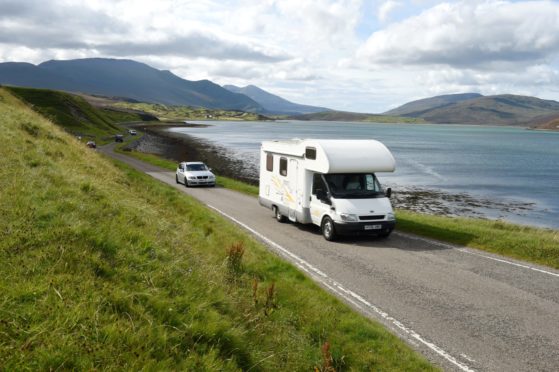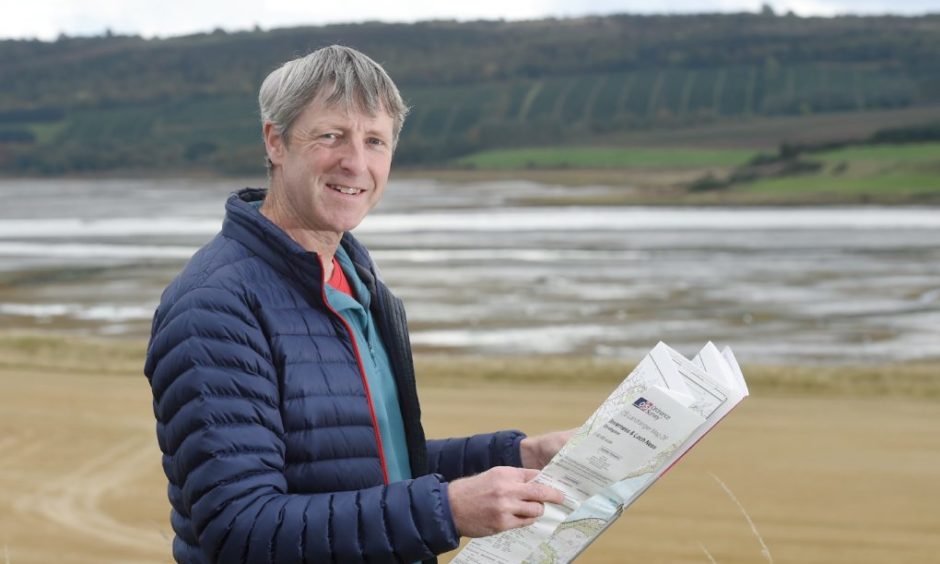Highland Council has unveiled its plans to deal with tourism pressures with a £1.5m package of funding, designed to “create a good experience” for visitors.
Seasonal rangers, more parking enforcement, more toilets, more litter collection , more provision for motorhomes, and bus services to tourist sites on Skye are all promised as part of the council’s drive to manage visitor pressures looming once the season is able to start.
The funds will be spent over two years, tackling the longstanding issues around tourism infrastructure which became all too apparent last year when staycationers headed to the Highlands in droves.
In a report to councillors, tourism officer Colin Simpson and outdoor access officer Philip Waite describe how the sheer numbers of visitors in certain spots last year ‘overwhelmed a number of Highland communities and existing services and facilities.’
They admit that due to a combination of Covid-19 restrictions, reduced staffing and limited budgets, services were often ‘unable to respond quickly enough, or at the level demanded’.
The officers predict that visitor numbers to the Highlands will remain high, despite lack of clarity over the impact of Covid on visitors this year.
The report says: “It is not about controlling or spoiling the visitor’s experiences but rather it is about creating a good experience for them.
“In successful destinations, this is achieved through planning to ensure the visitors are well informed, efforts are made to influence when they go there, and what they do there, and a suitable range of facilities and services are provided for them.”
A £300,000 chunk of the budget will go towards the employment of 10 seasonal rangers to be on the front line of visitor relations.
They will promote responsible behaviour and may also enforce regulations on litter, parking, fires and dog control.
On weekend and evening shifts they will tackle anti-social camping issues.
They will work with communities, land managers and other partners, including the police and emergency services.
A further £280,000 will go to the roads, with improved passing places and lay-bys, road signs, verge protection and road traffic orders, while £250,000 will go towards car park charging.
The plan is for around 21 sites to be considered by area committee for parking charge schemes, with the employment of a further four temporary officers to enforce them.
‘Wild looing’ which created such horror last year is to be tackled with a £60,000 investment in public toilet improvements and an increase in the number of comfort schemes.
Littering was also a massive bone of contention last year, so £180,000 will be spent on more and larger bins with increased litter collections using additional seasonal staff.
Provision for motorhomes will be improved with more waste disposal points, promotion of sites and help for landowners wanting to create such facilities.
Investments to Skye ‘could make an enormous difference in our communities’
In Skye, £60,000 will provide school buses to serve new routes to popular tourist locations when not in use.
Dave Till of destination management organisation Skyeconnect welcomed the plan, saying at least some of Skye’s needs had been addressed.
“All of the measures and investment proposed will help in addressing some of the issues we have been campaigning for in recent years.
“We have been advocating for the reinstatement of a ranger service for the last three years.
“We hope they will work with SkyeConnect and the island’s community trusts to prioritise activities that maximise the impact of a ranger service.
“Similarly, a bus service with park and ride facilities to take visitors to some of the most popular tourist destinations, could make an enormous difference in our communities that face traffic congestion during the peak tourist season.”
Tom Campbell, executive chairman of North Coast 500 Ltd, also welcomed the plan.
“We’re delighted that Highland Council is acting quickly to provide immediate and longer term strategic visitor management and leadership across the region. Whilst ad hoc investment is appreciated, this long-term vision will help enhance the visitor experience and support local communities for years to come.
“It’s vital that the industry now pulls together to help each other through the challenges ahead. Highland Council’s £1.5 million visitor management strategy is the first in a series of investment programmes planned that will see the economic growth and recovery of the region whilst protecting our precious landscape and natural environment for future generations to enjoy.”
And for VisitScotland’s Chris Taylor the investment is also welcome, promising that the organisation will work with communities to ensure visitors and locals can have a ‘fantastic experience’.
He said: “Our natural resources are hugely important to communities and visitors alike and should be protected.
“We have a unique opportunity to positively engage audiences, helping them to enjoy the outdoors responsibly and enabling them to aid the recovery of our rural economy. “Our marketing will continue to focus on regional and seasonal spread, encouraging visitors to take time to enjoy their experience of Scotland whilst also highlight the need to be responsible and respectful of Scotland’s communities and natural environment.
“Scotland is known around the world for the warmth of our welcome and the friendliness of our people and we want to work with communities to ensure that visitors and locals can both have a fantastic experience.
“Tourism is a force for good and has a part to play in not just providing jobs and economic benefits to every corner of Scotland but also bringing benefits to wellbeing and society.”
Highlands part of global overtourism struggle
In 2019 Highland’s 7.5m visitors generated £1.13bn in direct spend, a further £265m in indirect spend, supporting 25,000 jobs, according to Highland Council.
But these mighty figures don’t take into consideration the environmental and social impact on the region.
For many residents, the first motorhome on the horizon or tent on the beach brings a feeling of dread, even fear.
Last year, they worried about Covid coming into their villages, although this proved largely unfounded.
This year, they will doubtless worry again about that, but more so about the dent to their quality of life.
Highland residents prize their peace and quiet, the unspoiled nature around them, the ability to go out and about without endless hold-ups on single track roads, the opportunity to take the dog beach without dodging wild campers and stepping on human waste.
And the double-edged sword of tourism is not confined to the Highlands.
Edinburgh has been one of the world’s worst hotspots for overtourism since well before the pandemic.
Residents have even taken to the streets to stage protests against overtourism, industrial scale Airbnb and the ‘festivalisation’ of a city which attracts almost 4m visitors against a population of less than 500,000.
In Barcelona, residents have been pushed to breaking point by the 32m visitors flocking to enjoy its Mediterranean chic.
Thousands of passengers pour off cruise ships making Barcelona the most polluted port in Europe, according to the local press.
Around half the visitors are day trippers, flooding to hotspots, spending little money outside the main tourist area, and causing wearying congestion for residents.
The high demand for tourist accommodation, coupled with the opportunity to rent out rooms and apartments via sites such as Airbnb, has meant that rents are soaring, and residents are struggling to afford the increases.
The citizens have made their feelings known, attacking buses, puncturing tourist bikes and staging bitter marches and rallies.
Things don’t stack up for residents in tourism hotspots on the other side of world either.
Queenstown New Zealand sees more than 1.3m tourists each year, 35 visitors for every local rate payer, and the shine has gone off the tourist trail.
The city has become expensive, the infrastructure is inadequate, residents are being forced out.
The council even voted down Queenstown Airport’s growth plans, reflecting growing discontent about over-tourism.
“New Zealand could quickly become known as an expensive overcrowded little bunch of islands at the bottom of the world that’s not worth the trip. And that benefits nobody.”

